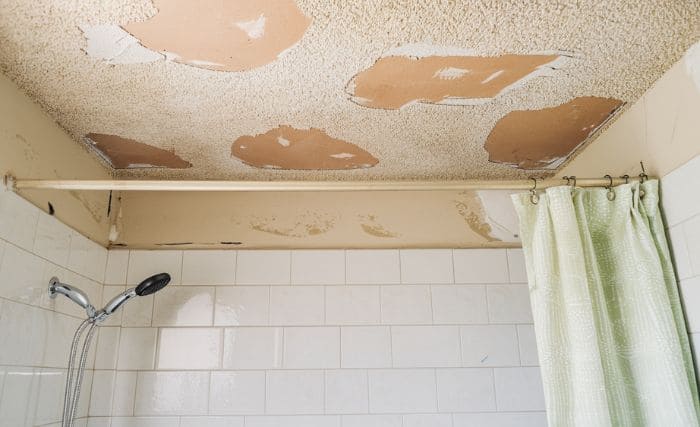Can You Use Regular Drywall in a Bathroom Ceiling?
Ever looked up in your bathroom and thought, “huh… wonder if this ceiling's holdin’ up alright?” Or maybe you're halfway into a reno and askin’ yourself, can you use regular drywall in a bathroom ceiling without stuff goin’ south later? Yeah, you're not the only one. I been there too. Truth is, this ain't as simple as slappin’ drywall up and callin’ it a day. Bathrooms are tricky little beasts ‘cause of all that steam, heat, and moisture floatin’ around.
So let’s break it all down and figure out what works, what don’t, and what to do instead.

UNDERSTANDING DRYWALL
WHAT IS DRYWALL?
Okay, so drywall’s that stuff most folks use for walls and ceilings. Some call it gypsum board, others call it plasterboard. Basically, it’s a gypsum core (fancy word for chalky stuff) smushed between two layers of thick paper. Super easy to use, cut, and hang. That's why it’s everywhere.
But just ‘cause it’s everywhere don’t mean it’s good everywhere, ya feel?
TYPES OF DRYWALL
There ain't just “one” drywall. You got a few flavors:
-
Regular drywall – the usual, cheapest, basic kind.
-
Greenboard – slightly better, fights off moisture a bit.
-
Blueboard – not super common, but does well in humidity.
-
Purple drywall – a real MVP when mold’s the enemy.
-
Type X – fire-resistant and extra strong, more for safety than steam.
More on those in a bit. Hang tight.
Here's a table summarizing the different types of drywall and where they are best used:
| Type of Drywall | Characteristics | Best Use |
|---|---|---|
| Regular Drywall | Standard white board, cheapest option | General interior walls and ceilings |
| Greenboard | Moisture-resistant, green paper backing | Bathrooms (except high-moisture areas) |
| Blueboard | Designed for veneer plastering | High-moisture rooms, like bathrooms and kitchens |
| Purple Drywall | Moisture and mold-resistant, purple paper backing | Bathrooms and basements |
| Type X Drywall | Fire-resistant, thicker and denser | Fire-rated walls and ceilings |
SPECIAL CONSIDERATIONS FOR BATHROOMS
WHY MOISTURE MATTERS
Bathrooms ain’t like your bedroom or hallway. There's a whole lotta water and steam up in the air all the time. Showers, baths, hot water runnin’—it’s like a mini rainforest in there. And all that humidity? It ain’t drywall’s best friend.
Use the wrong kind and boom—you got mold, mushy ceilings, maybe even water stains or worse. So yeah, moisture matters big time.
MOLD AND MILDEW ISSUES
Mold don’t play around. Once it starts growin’, it's hard to kick out. And regular drywall? That stuff’s like buffet night for mold spores. It just soaks up moisture and holds it in, creatin’ a perfect lil' environment for gross stuff to spread. Not only does it stink (literally), but it can also mess with your health too.
So if you’re still askin’ can you use regular drywall in a bathroom ceiling, just know you’re flirtin’ with mold drama.
CAN YOU USE REGULAR DRYWALL IN A BATHROOM CEILING?
THE BASICS
Alright, straight talk: yes, you can use regular drywall in a bathroom ceiling… but should you? Probably not. It ain't moisture-proof. One steamy shower too many and you might start seein’ saggy spots or brownish stains. Next thing you know, the paint’s peelin’, and the ceiling feels soft. Not great.
So yeah, it’s possible. Just not the smartest move.
THE EXCEPTIONS
Now, if you already got regular drywall up there and it ain’t showin’ no problems, no need to panic. You can do a few things to help it out:
-
Slap on some mold-resistant primer
-
Use high-quality bathroom paint
-
Make sure your fan’s workin’ overtime (ventilation is KEY)
But keep in mind, this is more like a band-aid than a cure. Won’t save ya forever.
THE BENEFITS OF USING MOISTURE-RESISTANT DRYWALL
GREENBOARD
Greenboard’s a step up. It's still drywall, but the outer paper is coated to resist moisture better. You’ll spot it by the green color (shocking, right?). It ain't waterproof tho. Not good for direct splash zones, like above a shower. But for the ceiling? Way better than regular.
BLUEBOARD
Kinda niche, but solid. Meant for use with plaster veneer finishes, but holds up better than plain drywall when it’s humid. Little more pricey, and not always easy to find at your local store, but hey—options are good.
PURPLE DRYWALL
This one’s a beast. Purple drywall fights off moisture AND mold. Total upgrade. If your bathroom gets steamy or you just wanna be safe, this stuff’s gold. Especially for ceilings—where mold usually starts first ‘cause warm air rises. Might cost a bit more, but def worth it.
TYPE X DRYWALL
Type X ain't exactly made for bathrooms, but it is strong. Fire-resistant too. If you want somethin’ thick and tough, maybe for a second-story ceiling or just added durability, Type X could work. Still, pair it with good ventilation and moisture-resistant paint. Better safe than sorry.
INSTALLATION CONSIDERATIONS
PREPPING THE AREA
Before hangin’ any drywall, you gotta make sure the ceiling’s dry and clean. Look for leaks, water stains, soft spots—anything sketchy. If there’s old drywall up there that’s already seen better days, rip it out. No point buildin’ on top of problems.
PROPER VENTILATION
Repeat after me: bathrooms NEED fans. A good exhaust fan sucks out all the steam and keeps moisture down. Helps your drywall stay dry longer. No fan? You’re just askin’ for mold, no matter what kind of drywall you got.
USING PROPER TOOLS
Don’t cheap out here. Use the right screws, hit those studs, and make sure everything’s level and tight. Bad install = saggy drywall. Ain’t nobody got time for that.
FINISHING TOUCHES
SEALING EDGES
Moisture sneaks in through corners and edges, so seal 'em up. Use moisture-resistant tape and the right joint compound. Makes the whole thing last way longer.
PRIMING AND PAINTING
Once your drywall's in, hit it with a mold-resistant primer. Then use a high-quality bathroom paint. Don’t just grab whatever’s on sale—this is one place where splurgin’ a bit helps big time.
REGULAR MAINTENANCE
Even the best drywall can’t fix neglect. Check the ceiling every now and then. Look for stains, soft spots, or funky smells. And for the love of bathrooms, run the fan after you shower. Every time. No exceptions.
CONCLUSION: MAKING THE RIGHT CHOICE
So, back to the big Q: Can you use regular drywall in a bathroom ceiling? Technically, yeah. But should you? Probably not. There’s better stuff out there—stuff that won’t give you stress every time you see a shadow on the ceiling.
Go with Greenboard, Purple drywall, or something built to take the heat (and the steam). And don’t forget: good prep and ventilation make all the difference.
So now ya know. Next time someone asks, “Can you use regular drywall in a bathroom ceiling?” you can say, “You can… but here’s why you probably shouldn’t.”


















